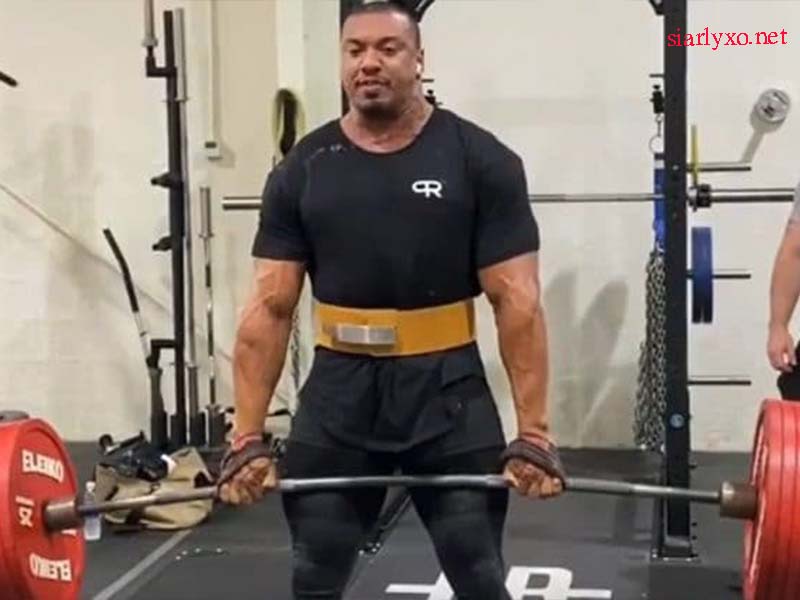In the world of fitness and strength training, the term “PR” is frequently thrown around, especially in gyms. But what does PR mean in the gym? It stands for “Personal Record,” and it holds significant importance for athletes and gym-goers alike. Achieving a PR is often seen as a benchmark for progress and a reflection of hard work, dedication, and improvement over time. This article will explore the concept of PR, its relevance in fitness, how to set and achieve your own PRs, and the psychological benefits associated with reaching these milestones.
What Is a Personal Record (PR)?
A Personal Record (PR) refers to the best performance an individual has achieved in a specific exercise, lift, or fitness test. It can apply to various activities, including weightlifting, running, swimming, cycling, and other fitness-related challenges. PRs are essential in the fitness community as they help individuals track their progress and set goals.
For instance, if you have lifted a maximum of 200 pounds in the bench press, that number stands as your PR. If you later manage to lift 210 pounds, you have officially set a new PR. This simple yet powerful concept is a driving force behind many athletes’ training regimens.
The Importance of Tracking PRs
- Motivation: Tracking your PRs can serve as a significant motivator. Seeing tangible evidence of progress can encourage you to push yourself harder in the gym.
- Goal Setting: Personal records provide clear benchmarks that help you set realistic and achievable goals. By knowing your current limits, you can set incremental targets that lead to long-term success.
- Measurement of Progress: Regularly assessing your PRs allows you to monitor your fitness journey. This assessment can be invaluable in determining what works in your training regimen and what needs adjustment.
- Self-Competition: Competing against yourself can be a powerful motivator. Setting and breaking PRs creates a competitive environment within your fitness journey, pushing you to strive for continuous improvement.
Types of PRs in the Gym
When it comes to personal records, they can be categorized into several types depending on the nature of the exercise:
Strength PRs
These records relate to the maximum weight lifted in various strength training exercises, such as:
- Squats: The highest weight you can squat in one attempt.
- Deadlifts: The maximum weight lifted off the ground in a deadlift.
- Bench Press: The heaviest weight you can lift in a bench press.
Strength PRs are often the most celebrated in the gym, as they reflect the hard work and dedication put into strength training.
Endurance PRs
Endurance PRs measure how far or how long you can sustain a specific exercise. These include:
- Running: Best times for a set distance, like a 5K or marathon.
- Cycling: Fastest time to complete a set distance.
- Swimming: Best time to cover a certain distance in the pool.
Endurance PRs are crucial for athletes focused on cardiovascular fitness and stamina.
Skill-Based PRs
These records are about mastering a particular skill or technique. Examples include:
- Olympic Lifts: Achieving a personal best in the snatch or clean and jerk.
- Gymnastics Moves: Perfecting moves like the muscle-up or handstand.
Skill-based PRs demonstrate the dedication to mastering complex movements and techniques.
Setting Your Personal Records
Setting personal records requires a structured approach. Here are steps to consider:
Choose Your Metrics
Identify the specific exercise or fitness test for which you want to set a PR. This could be a weightlifting movement, a running distance, or a skill-based activity.
Establish a Baseline
Before you can set a new PR, you need to know your current performance level. Perform the chosen exercise to establish your baseline. Make sure to do this under similar conditions to when you attempt your PR.
Create a Training Plan
To achieve a PR, you need a structured training plan that includes:
- Progressive Overload: Gradually increase the weights you lift or the distance you run.
- Recovery: Allow your muscles adequate time to recover to prevent injuries and promote growth.
- Variety: Include different exercises and modalities to avoid plateaus and keep your workouts engaging.
Track Your Progress
Keep a detailed record of your workouts, noting the weights lifted, distances covered, and times achieved. This tracking will help you identify patterns and areas for improvement.
Test and Attempt PRs
After following your training plan for a reasonable period, schedule a PR attempt. Choose a day when you feel rested and energized, and give it your best shot. Make sure to have a proper warm-up and cool-down routine in place.
Overcoming Plateaus in Your Journey to PRs
Hitting a plateau in your training can be frustrating, especially when you’re trying to set a new PR. Here are some strategies to break through these barriers:
Reassess Your Training Program
Sometimes, the routine you’ve been following can lead to diminishing returns. Consider changing your workout regimen, incorporating different exercises, or altering your set and rep schemes.
Focus on Nutrition
Fueling your body appropriately is vital for performance. Ensure you’re consuming enough calories, macronutrients, and micronutrients to support your training and recovery.
Incorporate Recovery Techniques
Recovery plays a crucial role in allowing your muscles to repair and grow stronger. Techniques such as foam rolling, stretching, and adequate sleep can enhance recovery.
Stay Mentally Strong
Mental toughness can significantly impact your performance. Visualization techniques, positive self-talk, and setting smaller, achievable goals can help you maintain motivation and focus.
The Psychological Benefits of Achieving PRs
Achieving a personal record can have profound psychological benefits. Here’s how hitting those milestones can positively affect your mental well-being:
Boosts Confidence
Each time you achieve a PR, you reinforce the belief in your abilities. This confidence can spill over into other areas of your life, creating a positive feedback loop of success.
Reduces Stress and Anxiety
Physical activity, especially intense workouts, has been shown to reduce stress levels and promote feelings of well-being. Setting and achieving PRs can contribute to this sense of accomplishment and relieve anxiety.
Enhances Focus and Discipline
The discipline required to train consistently and work towards PRs can sharpen your focus in other areas of your life. The skills developed in pursuit of fitness goals can translate to improved productivity and discipline in your professional and personal life.
Builds a Sense of Community
Sharing your PR achievements with others can create a sense of camaraderie within the fitness community. Whether through social media, gym groups, or competitions, celebrating these milestones can strengthen connections with fellow fitness enthusiasts.
Common Misconceptions About PRs
- PRs Only Matter in Competitive Sports: Many people believe that personal records are only significant for athletes or competitors. However, anyone can benefit from tracking their progress and setting personal milestones, regardless of their fitness goals.
- You Can Only Set PRs in Weightlifting: While PRs are commonly associated with strength training, they can apply to any fitness-related activity, including endurance events, skill-based movements, and even bodyweight exercises.
- Hitting a PR Means You Are Ready for Competition: Just because you have set a personal record does not necessarily mean you are ready to compete. Competitive readiness involves various factors, including experience, strategy, and mental preparation.
Conclusion
Understanding what PR means in the gym is vital for anyone looking to improve their fitness journey. Whether you’re lifting weights, running distances, or mastering skills, setting personal records can serve as a powerful motivational tool and a measure of progress. By embracing the concept of PRs, you can cultivate a sense of achievement, drive your training forward, and enhance your overall well-being.
As you embark on your journey to set and achieve your own personal records, remember that the path to success is unique for everyone. Celebrate your milestones, stay committed to your training, and enjoy the process of becoming a stronger, healthier version of yourself.




